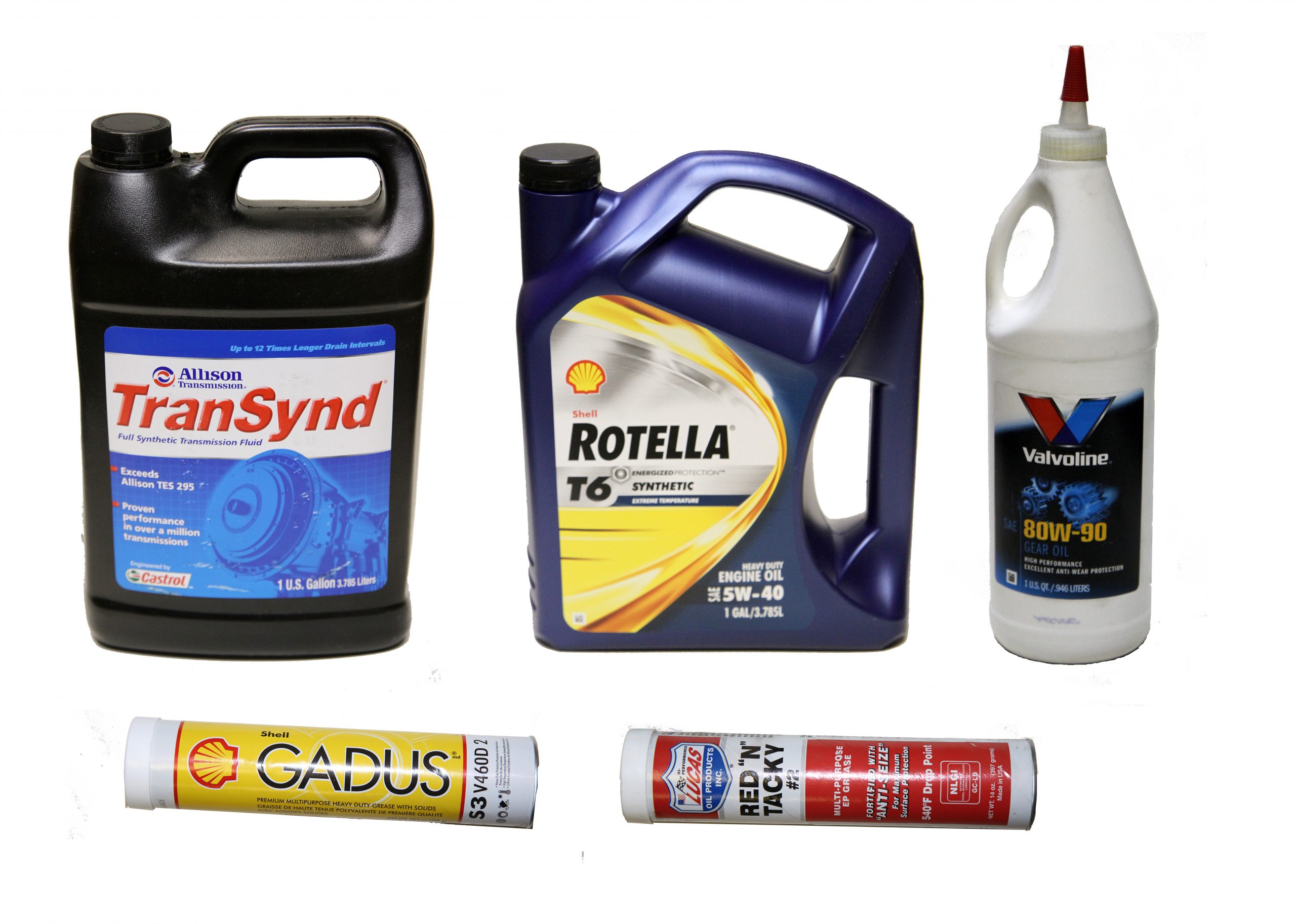Proper maintenance is critical to keep your motorized RV in working order and prevent breakdowns. Engine oil changes are the most common service procedure but a motorhome is equipped with numerous other components, such as axles, transmissions, wheel bearings and other components that all require periodic service. Many of these components require specific lubricants so it’s important to select the proper lubricant for each specific component according to the chassis manufacturer’s specifications.
Lubricants are designated with a series of API or MIL category numbers that identify their suitability for various applications. Choosing the proper lubricant consists of reading the owner’s manual for your specific coach to determine which API service level you need to meet, then matching the lubricant’s viscosity and rating to your operating environment.
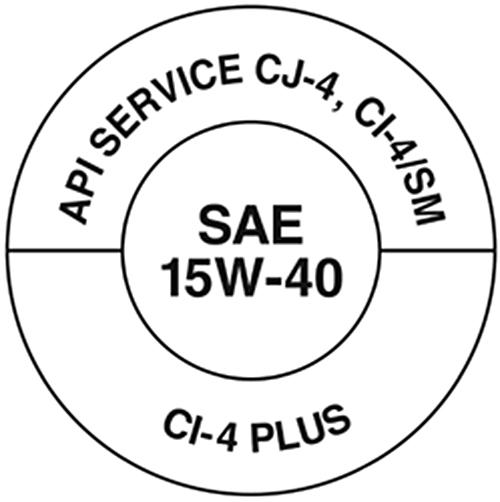
Ratings
There are two types of ratings that apply to any lubricant – viscosity and quality. Viscosity is another term for thickness. Viscosity also determines the flow rate or ability of the oil to flow in low temperatures. Every engine is designed to utilize a specific viscosity oil for any given set of operating conditions. For this reason oils are rated by the Society of Automotive Engineers (SAE) according to a standardized numerical rating. When selecting any engine oil you should always consult your owner’s manual to determine the viscosity that should be used for your specific operating environment.
The quality of the oil is determined by the chemical makeup of the oil and it’s imbedded additive package. Base oils account for about 85-90% of the total formulation. The remainder consists of additives that provide full protection and include antioxidants, viscosity modifiers, dispersants, detergents, anti-wear agents, rust and corrosion inhibitors, anti-foam agents and a host of other additives. The American Petroleum Institute has established the API rating system to identify the quality of each particular oil and both the API and SAE ratings will be marked on every container. Be sure to consult your owner’s manual for the minimum API rating specified for your engine. You can always exceed the API ratings and use a better grade oil but never drop below the minimum API rating specified for your particular application.
Viscosity
The SAE ratings of a lubricant identify its viscosity. The larger the number, the heavier the oil. For example, an SAE 40 oil will be heavier than an SAE 30 oil while an SAE 10 weight oil will be significantly lighter. The viscosity determines the ability of the oil to flow at a given temperature. As oil heats up it thins out, flows faster, and doesn’t provide the same level of lubrication as a thicker oil. If the oil is too thick it won’t flow fast enough to provide lubrication for the critical components that it is supposed to protect. SAE ratings reflect the ability of the oil to flow at 210 degrees Fahrenheit and can be useful for determining how that oil will perform in summer use but it doesn’t take into account the low temperature performance of the oil, which reflects winter use. A second test is taken at 0 degrees Fahrenheit to rate an oil designed for winter use and these ratings are given the “W” rating. For example, a 10W oil is thinner than a 20W oil but both are designed for winter use, although the thinner 10W oil will flow better in colder temperatures.
The majority of the wear and tear on any engine occurs during startup when the engine is turning over and firing but everything is cold and the pistons haven’t yet expanded to their operating tolerances. The oil begins to flow but by the time it gets pumped to all of the critical areas the engine has been running for a few seconds and it’s during those few seconds that most of the wear occurs. Using a lighter weight oil helps in that regard because the oil pressure comes up faster than a thicker oil. However, once the engine is working under a heavy load this oil becomes too thin and doesn’t provide adequate lubrication. This gives the choice of living with a heavy oil and live with the startup wear or use a lighter oil and pay the penalty when the engine is really working hard. Fortunately, multi-viscosity oils are available that eliminate that problem.
Multi-viscosity oils are designed to correct those shortcomings of single viscosity oils. A multi-viscosity oil has two ratings. For example, a 10W-30 oil will have the cold temperature performance of a 10W winter oil, yet retains the high temperature performance of an SAE 30 summer oil once the engine reaches its operating temperature. This gives you the best of both worlds and does a better job of protecting your engine at both startup and when under load.
Engine Oil API Ratings
The owner’s manual for your engine will detail the minimum API rating oil that should be used.
Diesel engines will have an API service classification such as CJ-4. The “C” means commercial so the API rating for every oil designed for use in heavy duty diesel engines will begin with a “C”. The following letter, which in this example is “J”, designates the latest specification. Whenever a new specification comes out the letter will increase. For example, an API CJ-4 spec will be a better quality oil than an API CI-4 and can be used wherever an API CI-4 oil is specified. You can always use a higher letter than what your engine’s specs require because your engine’s specification is a minimum requirement and it never hurts to go with a better oil. The “4” at the end merely designates that the oil is designed for a 4 stroke engine.
Gasoline engines have different requirements than diesels when it comes to lubricating oils. Their API service classifications begin with an “S”, followed by a second letter. The “S” stands for “Spark Ignition” while the second letter designates the service classification. Just as in oils designed for diesel engines, each letter that is higher designates a better oil so an API service classification of “SM” is better than an API service classification of “SJ”. Again, you can always exceed the required minimum service classification for your engine but never go below that specification.
Motorhomes using the EPA-2007 spec engines generally began showing up in the 2008 model year. The new emissions requirements required use of Ultra Low Sulfur Diesel (ULSD) fuel due to the Diesel Particulate Filters that were added to the emissions controls, which were susceptible to fouling by any contaminants, such as sulfur. This required ULSD fuel with less than 500 PPM of sulfur. Motor oil contained levels of zinc as an anti-wear additive but unfortunately the DPF was also fouled by levels of zinc that would be present in the exhaust so a new motor oil was designed for use with these engines. This oil was the API CJ-4 specification and the zinc was removed from the oil and replaced with other anti-wear compounds that would not leave any ash content in the DPF.
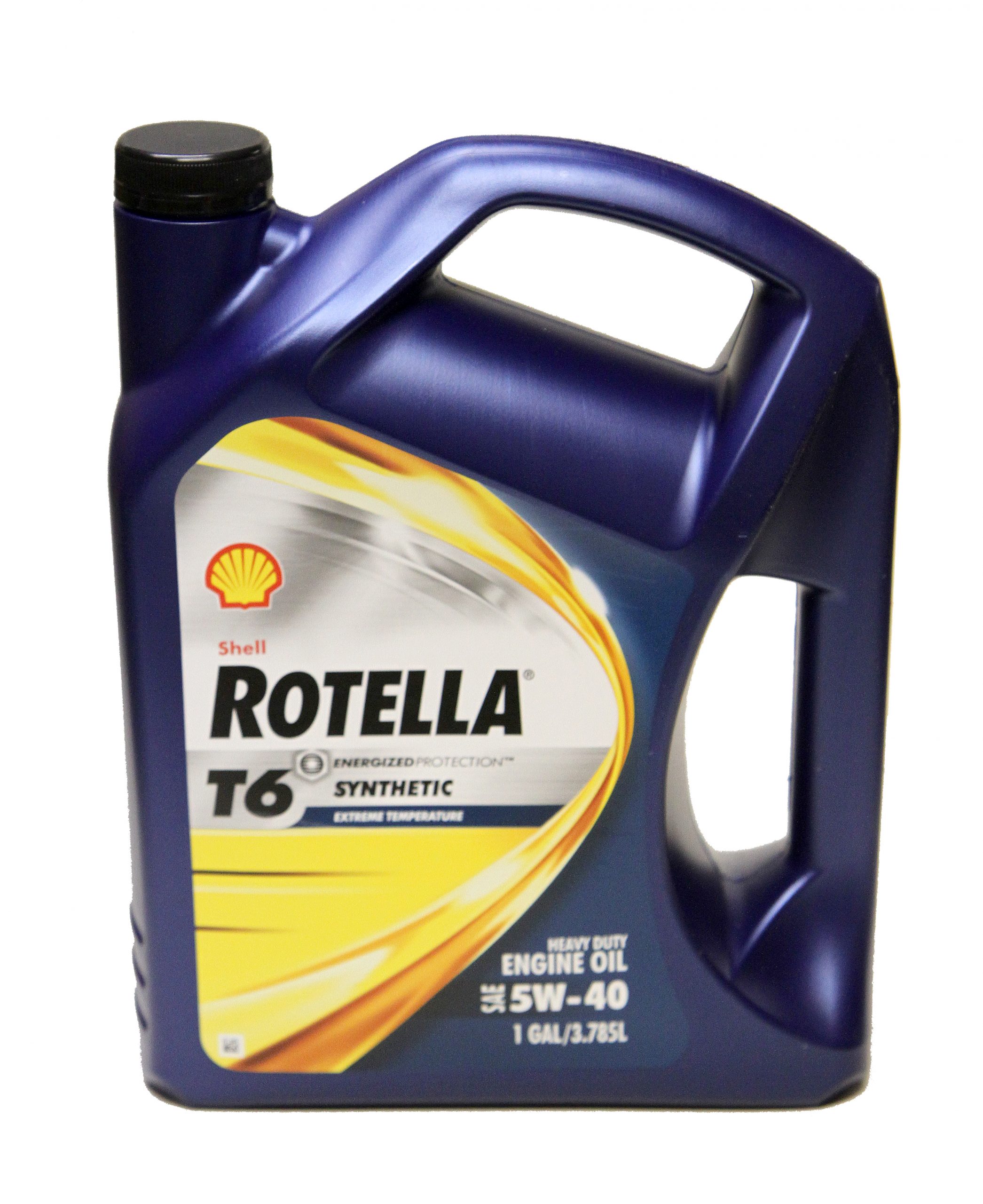
A Case for Synthetic
Conventional motor oil is pumped from the ground, basically from dead dinosaurs, and contains impurities, such as sulfur, wax and asphalt. Because conventional oil is “found”, rather than “created”, there is a fair amount of inconsistency within the size of its molecules. Synthetic oil is chemically created in controlled laboratory conditions which eliminates any impurities and also provides for molecules that are consistent in size and shape. Because synthetic oil is created from scratch it can be fine-tuned to have just about any properties that the chemist chooses to incorporate into it. Synthetics have the ability to pour at much lower temperatures than conventional oil, which greatly improves cold weather performance without diminishing the high end performance. It’s common to find a high-end synthetic oil of 5W-40 that can replace a non-synthetic 15W-40 oil for better initial startup and cold weather protection.
All oil will eventually boil once it gets hot enough and will vaporize and harden as carbon deposits once it hits hot spots within the engine, such as the area immediately above the top piston ring where this carbon buildup accelerates wear on the cylinder wall. Another area is the turbocharger oil galleries where oil cokes up and plugs the critical galleries that supply oil to prevent failure of the turbocharger bearings. If this continues the flow will be restricted and you will experience premature turbocharger failure. Conventional oil tends to break down at about 250 degrees but synthetics are good to 290 degrees which minimizes the chance of coking and increases the life expectancy of your turbocharger.
Synthetic oil manufacturers claim that you can extend your service intervals when compared to conventional oil but not every engine manufacturer allows this so you may not be able to do that without voiding your engine’s warranty. Most motorhome owners change their oil based on time rather than mileage because they don’t get driven as often so the idea of saving money by extending service intervals may or may not apply due to the increased cost of synthetic oil. However, synthetic oil will give your engine better protection. Cold starts and operation in cold weather will be easier with synthetics due to the lower pour point of the oil. The increased boiling point of a synthetic oil will also ensure that you have an edge on protection during those few times your engine is really working hard as well.
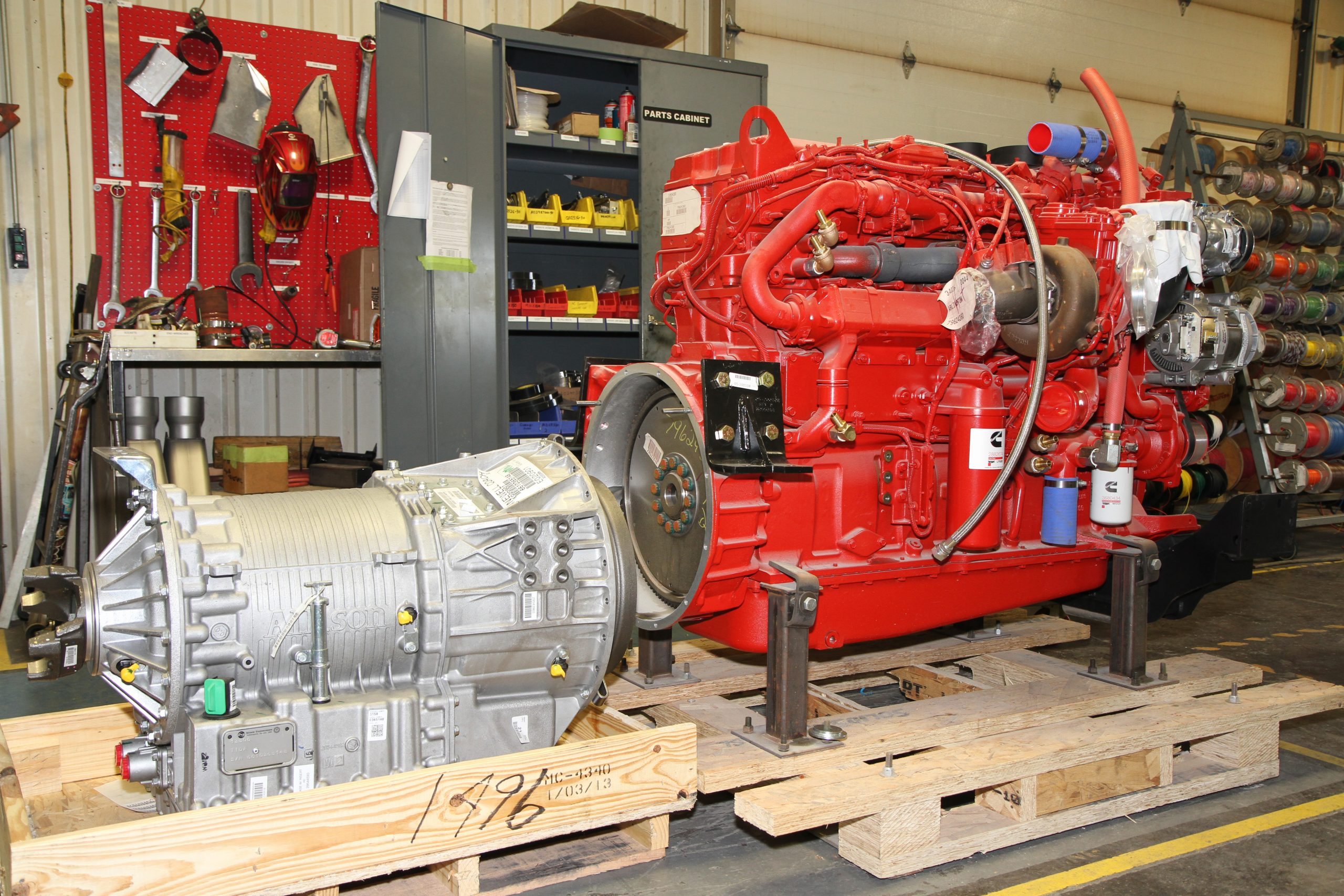
Automatic Transmission Fluids
Engine oil is designed to lubricate bearing surfaces that are under compression and have detergent and additive packages to help clean the engine and trap combustion deposits. Automatic transmission fluid is designed to lubricate fast turning shafts, clutch packs, to transfer power through a complex system of servos, pumps and fluid couplings and is the primary method of cooling the transmission so the lubricants that are used in them are also quite different. SAE viscosity and API ratings also do not apply so a different rating system is used.
If you have smaller class B or C motorhome chances are you may have a Ford or Chevy transmission in it. These transmissions utilize the Dexron or Mercon variants of automatic transmission fluid that are available at auto parts shelves almost anywhere. Coaches built on the Mercedes sprinter series of chassis most likely use the MB 236.x series of transmission fluids, such as Shell’s 134 MB236.14. Allison’s TranSynd is also rated as meeting the MB 236.91 specification.
Most class A coaches with diesel engines are equipped with the popular Allison automatic transmissions. Sometime during the 2004 model year, both Freightliner and Spartan began shipping their chassis pre-filled with Allison’s synthetic TranSynd fluid, which met the TES 295 specification. This replaced the Dexron non-synthetic fluid used in earlier years and greatly improved performance and extended service intervals. Recent improvements in fluid technology evolved into Allison’s TES 668 specification.
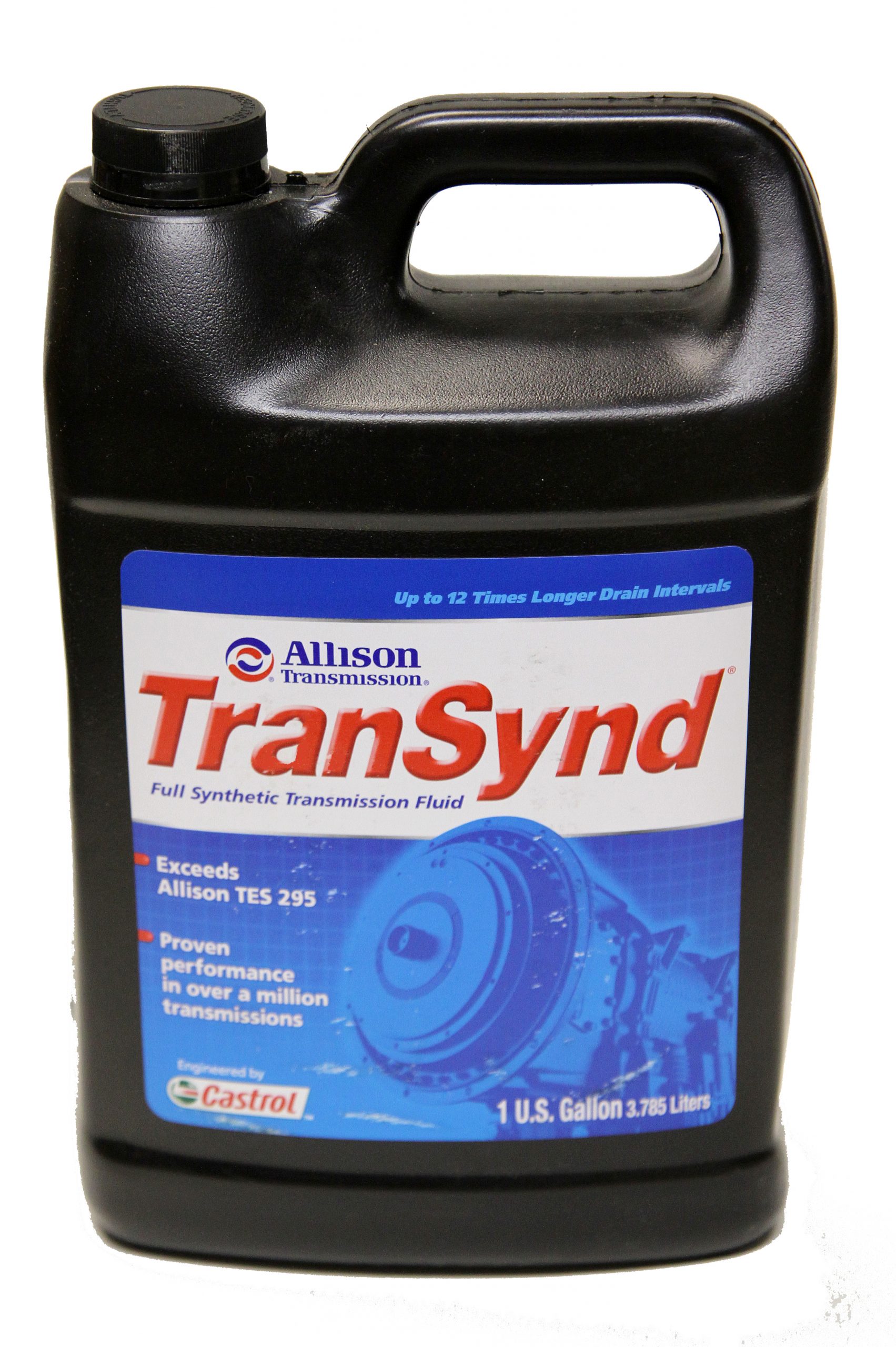
One big question with Allison owners is whether they need to find Allison’s TranSynd synthetic transmission fluid or if another brand will suffice. Allison has done extensive testing with other synthetic fluids and has published a TES 668ä specification listing to identify which brands are compatible with Allison transmissions. Any ATF that is approved by Allison will qualify for the extended service intervals identified in any Allison service schedules. A complete listing of approved lubricants can be found at https://www.allisontransmission.com/parts-service/approved-fluids/on-highway-fluids .
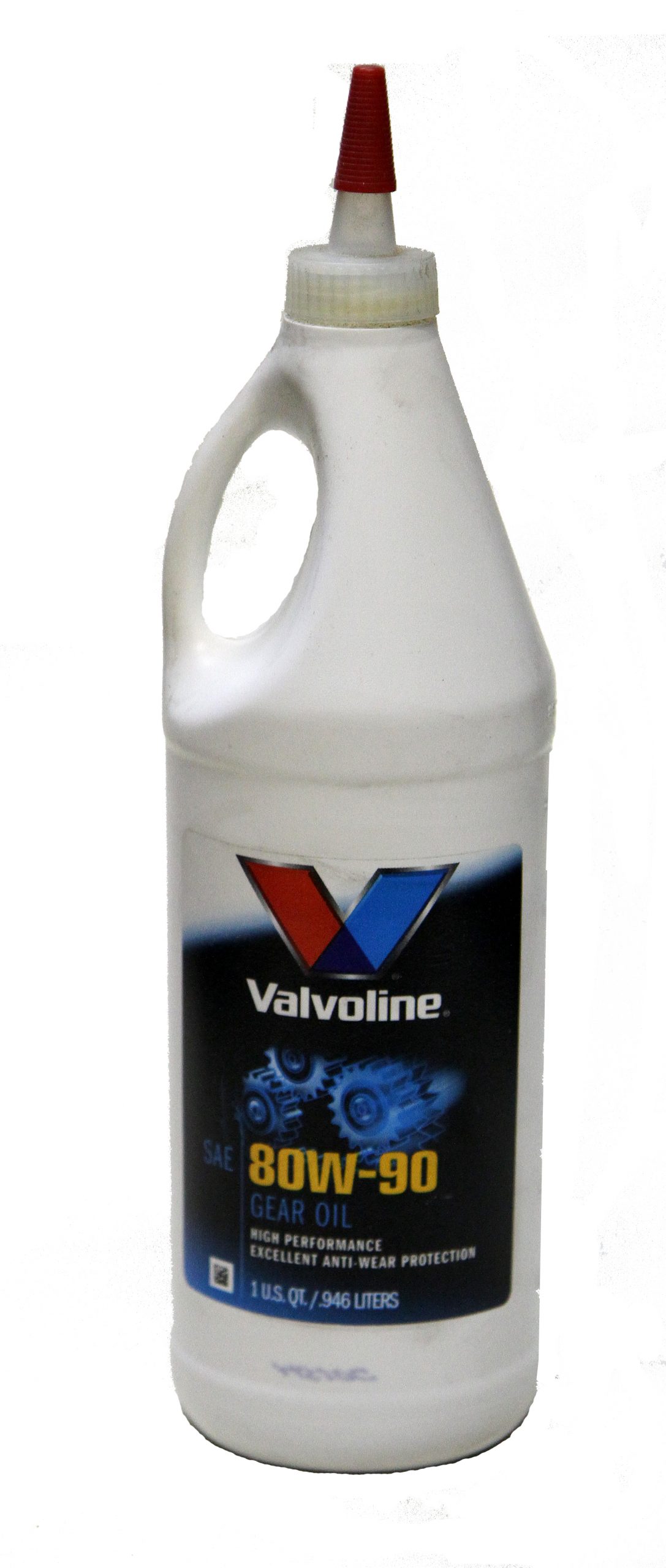
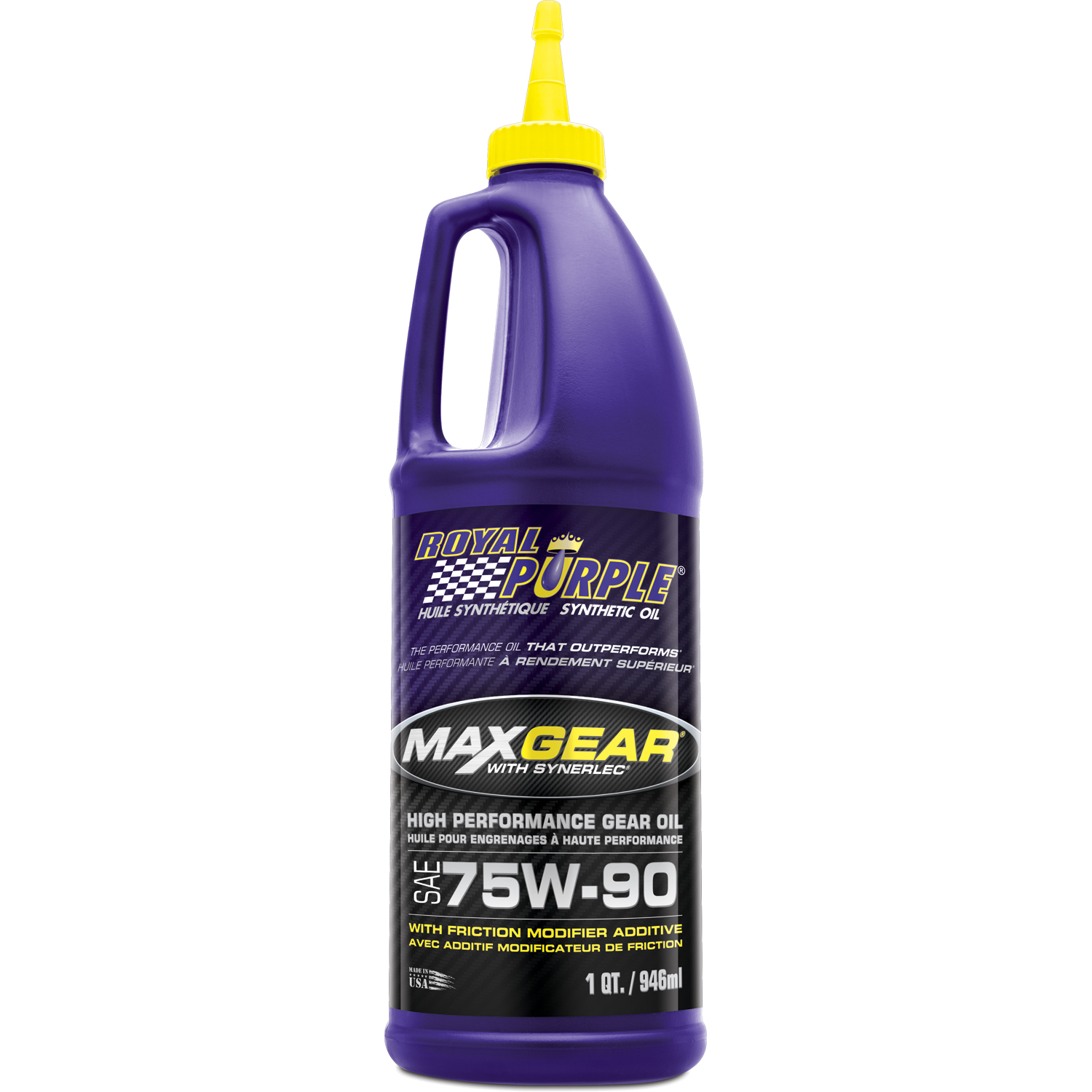
Gear Lubes
Gear lubricants are used to lubricate high load areas that receive friction during motion, such as rear axles and wheel bearings. Gear lube is heavier than motor oil and ranges between SAE 75 and SAE 140 in viscosity. It does not have to deal with the combustion requirements of an engine so its main concern is being able to do its job under high operating temperatures and loads.
Gear lube applications generally fall into one of two categories – standard duty or extreme duty. The majority of situations require your basic 80W-90 gear lube and is used to lubricate wheel bearings, gear cases, and rear axle ring and pinion gear sets.
Sometimes the load is greater or the conditions are more extreme so the manufacturer has determined that greater protection is required. In that case a heavier gear lube, such as SAE 140 will be specified. Actually, this is the perfect place for a synthetic gear lube. Many synthetic gear lubes come with an SAE 75W-140 viscosity rating. This multi-viscosity gear lube flows well in low temps with its 75W rating, yet has the rating of an SAE 140 gear lube when things get hot. A synthetic 75W-140 gear lube is the ultimate protection for any axle or gearbox, such as a cooling fan jackshaft. Synthetics are also less prone to foaming than conventional gear lubes, which allows for more efficient lubrication. The following chart illustrates typical low temperature (pour point) and high temperature (flash point) properties of these gear lubes.
|
Viscosity Rating |
Pour Point Degrees (F) |
Flash Point Degrees (F) |
|
80W-90 Conventional |
-17 |
208 |
|
75W-90 Synthetic |
-60 |
347 |
|
75W-140 Synthetic |
-60 |
390 |
As the above chart indicates, synthetic lubricants flow much better in colder temperatures and also hold up better at high temperatures.
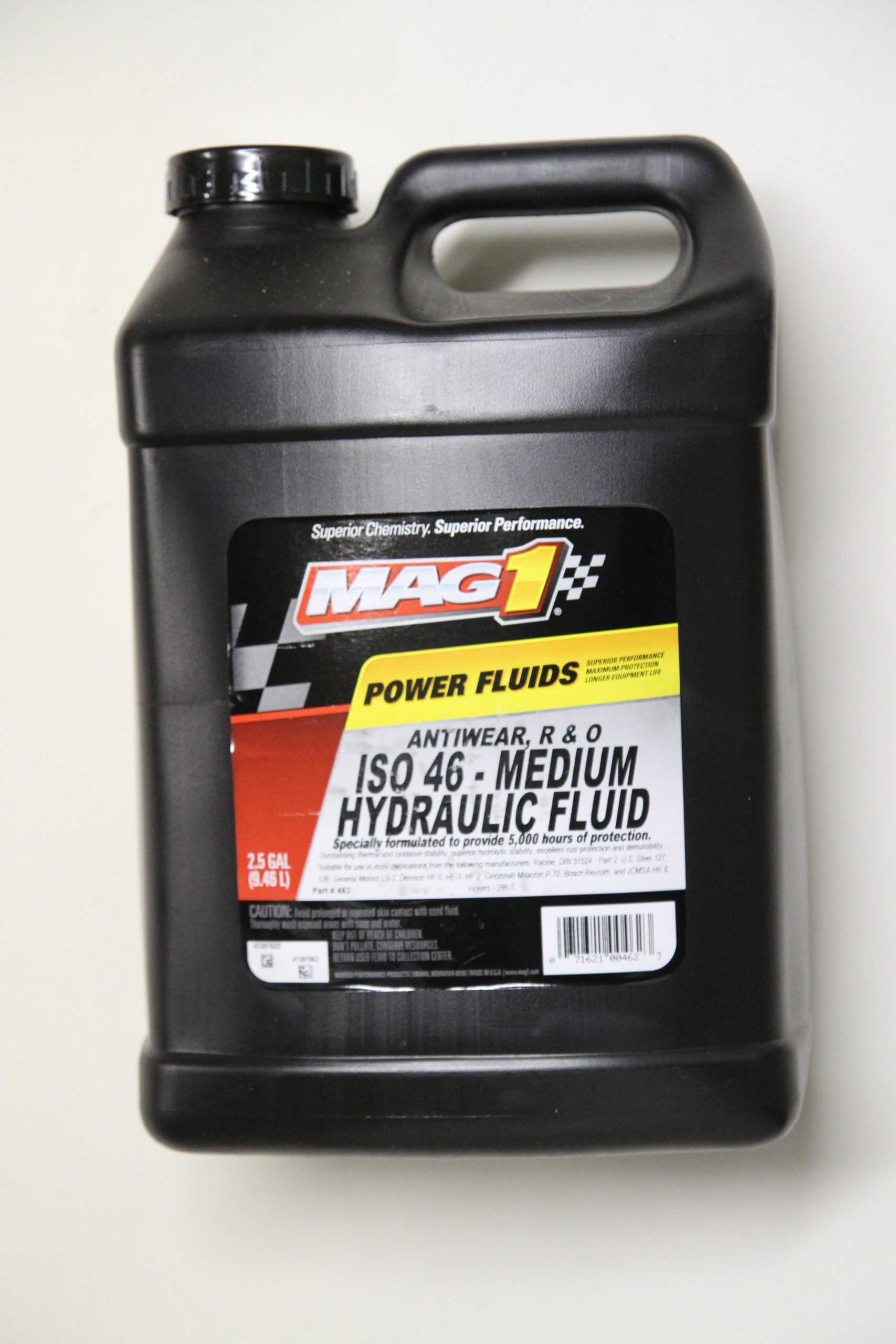
Hydraulic Oil
Hydraulic oil is commonly used in diesel pushers to operate power steering units and any hydraulic fan motors that are commonly found on motorhome’s equipped with a side radiator. This motor, as well as the power steering system, is driven via a hydraulic pump that is mounted on the engine and fed by a hydraulic fluid reservoir. Hydraulic oil needs to be clean and non-foaming to provide adequate protection to the components in the hydraulic system and also to transfer power from the pump to the motor.
Hydraulic fluid is generally used in either AW32 or AW46 formulas. The AW stands for “anti-wear” and is used to identify hydraulic fluids. The 32 or 46 represents the weight of the fluid with higher numbers indicating a heavier fluid with AW46 being the most frequently used in a motorhome application. Keeping this fluid cool and free from moisture or dirt is critical so filter changes and fluid changes are all part of a routine service schedule.
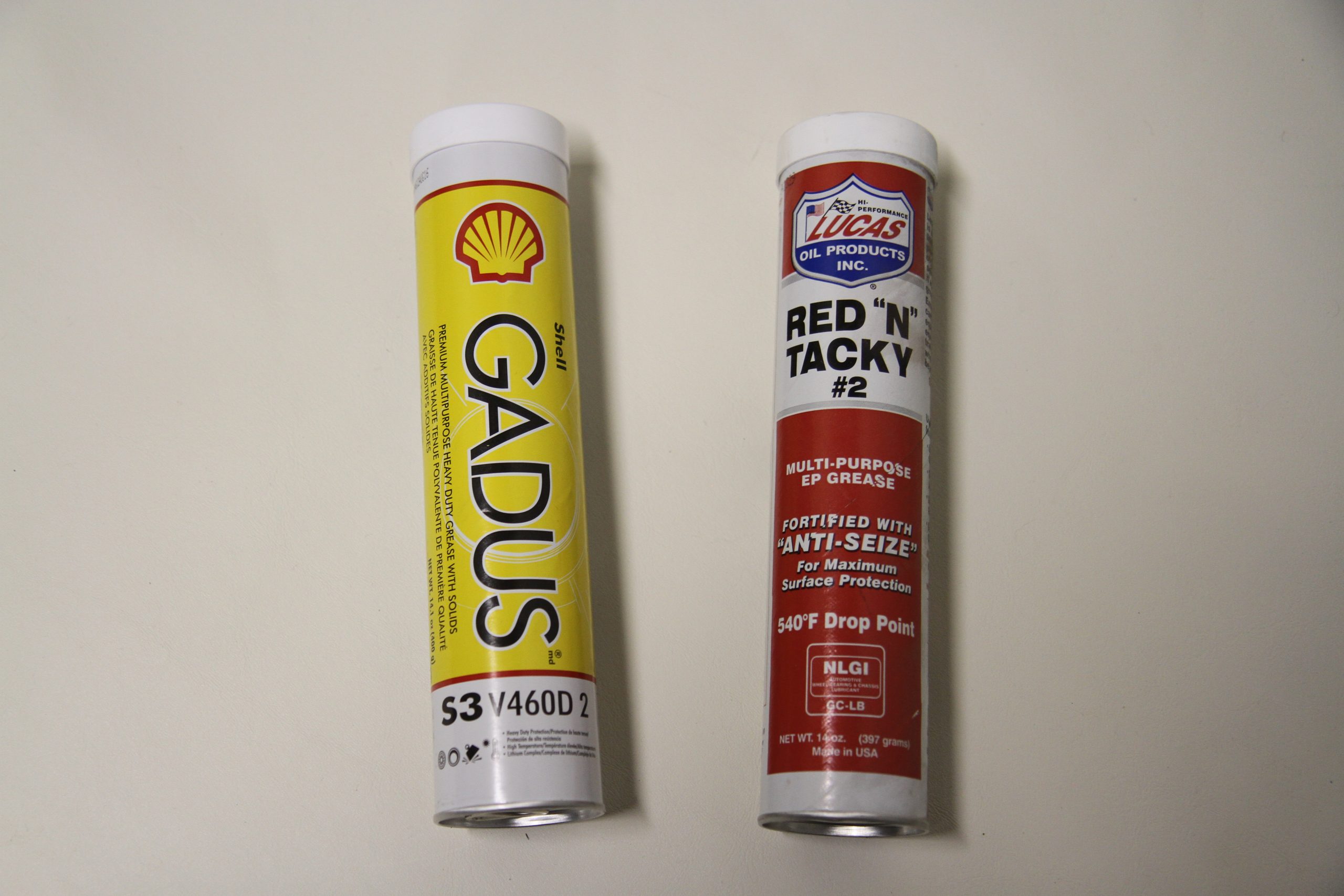
Chassis Grease
You might think that grease is grease but there’s actually quite a bit of difference between the various formulations and their applications. Not every component has the same lubrication requirements so the ideal grease won’t be the same in every situation either. Matching the correct grease to the application will increase the longevity of those components.
Classification of grease is much easier than motor oils. Whereas motor oil is rated by the Society of Automotive Engineers SAE numbers, the viscosity of grease is referred to by its rating by the National Lubricating Grease Institute, or NLGI. The most popular chassis grease is an NLGI 2, which is commonly found at any auto parts store. A grease with an NLGI 1 rating is a thinner grease that will melt and flow at a lower temperature and is probably the stuff you’d want in your equipment if working the Alaska pipeline but NLGI 2 works for 90% of automotive applications. Conversely, NLGI 3 is a stiff grease and would be used in extreme conditions where extreme heat is encountered and has no real application in the RV industry.
Grease is a mixture of three components – lubricating fluid, performance enhancing additives and thickener. The lubricating fluid can be petroleum based oil, vegetable oil or any synthetic lubricating fluid and makes up the majority of the grease formulation while the additives make up a relatively small portion. The thickener is what separates grease from oil or other liquid lubricants and makes the product semi-solid rather than liquid.
Plain lithium grease works well for wheel bearings but is marginal for driveshaft universal joints and front end components because universal joints and front end parts have different needs than wheel bearings. These components don’t use rotating rollers within bearing races but rely on a thin layer of grease to separate two metal surfaces so that they don’t gall and bind. If enough force is applied to these two surfaces the grease can compress and slide away from between them, allowing metal to metal contact and increased wear. Additionally, when surfaces pull apart from each other the grease film can fall away rather than stick to the surfaces. Fortunately there are more advanced greases that improve upon the basic lithium grease. They are still lithium greases but they’ve been enhanced with additives to improve the characteristics of the grease. Naturally, they cost a bit more than your entry level lithium grease but are well worth it.
One of these characteristics is to improve the tackiness of the grease. If you place a small wad of lithium grease between your thumb and index finger and squeeze, much of the grease will ooze out but a small layer will remain. But when you pull your two fingers apart you’ll see that the grease breaks free and sort of leaves a slight film on your fingertips. Each time you squeeze and release you’ll lose more of the lubricant and eventually there won’t be any left. Better quality greases are available to improve on the tackiness of a basic lithium grease. If you were to place some of this between your fingers and do the same test, you’d find that the grease would tend to stick to your fingertips and it would be harder to pull them apart. When you did pull them apart, if you looked carefully, you’d notice that the grease would stretch like strings between your fingertips. One popular grease with this characteristic is Lucas Oil’s Red-n-Tacky grease. This “tacky” version of the grease will do a better job by staying in place better than a less expensive lithium grease.
When two surfaces are being forced together, which is typical of a ball joint or tie rod end, the grease tends to squish out from between the two surfaces. If you could keep these two surfaces from impacting each other the grease film would remain in place and your components would last longer with less wear. For this you need to go to a Moly grease, which is a grease that typically has 5% Moly content added to it. Molybdenum is technically a metal but moly particles have unique properties and are actually lubricants and won’t scratch or damage metal surfaces. When Moly is added to grease, it comes in the form of small round particles that act as miniature ball bearings. Moly’s unique characteristic is that it will not scratch the metal, yet it is very hard and it won’t crush or be destroyed when put under pressure. The Moly particles are carried in the grease and they prevent metal to metal contact and allow the grease to filter in and around the small moly particles to cool and lubricate the components. Moly grease typically has a black color to it and is messy to clean up but is an excellent grease for front end work and universal joints. The one application where Moly grease is not recommended is for wheel bearings. The Moly particles tend to force the rollers away from the races, which tightens the bearing clearance and increases heat. For wheel bearings it’s best to go with a more fibrous general purpose or tacky grease that has no Moly in it. Grease that is designed for use in wheel bearings will generally meet the NLGI GC-LB or SAE J310 specifications.
There are super greases available. Synthetic grease is available by many lubricant suppliers. Synthetics offer a greater temperature range than conventional greases and are great for extreme conditions but the vast majority of RV owners won’t realize the benefits of them because they don’t encounter those extremes. My personal favorite is a lithium based grease with a tacky property that also contains Moly, such as Schaeffer Oil #221 Moly Ultra, Shell’s Gadus S3 V460 D2, Mobil Centaur Moly or Valvoline Palladiumâ grease. These greases have excellent tackiness as well as Moly particles and resist water penetration, hold up well to heat, stay in place and resist shock loads. I’ve been running this type of grease for a long time in numerous vehicles and my universal joint and front end component longevity is remarkable. Note that many greases are available with improved load carrying capacity, even non-Moly greases. These greases will carry the EP label, which stands for Extreme Pressure.
Check the Manual
A proper maintenance cycle for your coach revolves around matching every component with the correct lubricant that will deliver the best lubrication. Your owner’s manual will detail the minimum specifications required but keep in mind that exceeding those specs with a higher quality lubricant will generally yield greater longevity. Always follow the recommended service schedule for that vehicle and change filters regularly. Taking proper care of your coach will save you money in the long run and deliver trouble-free service.


